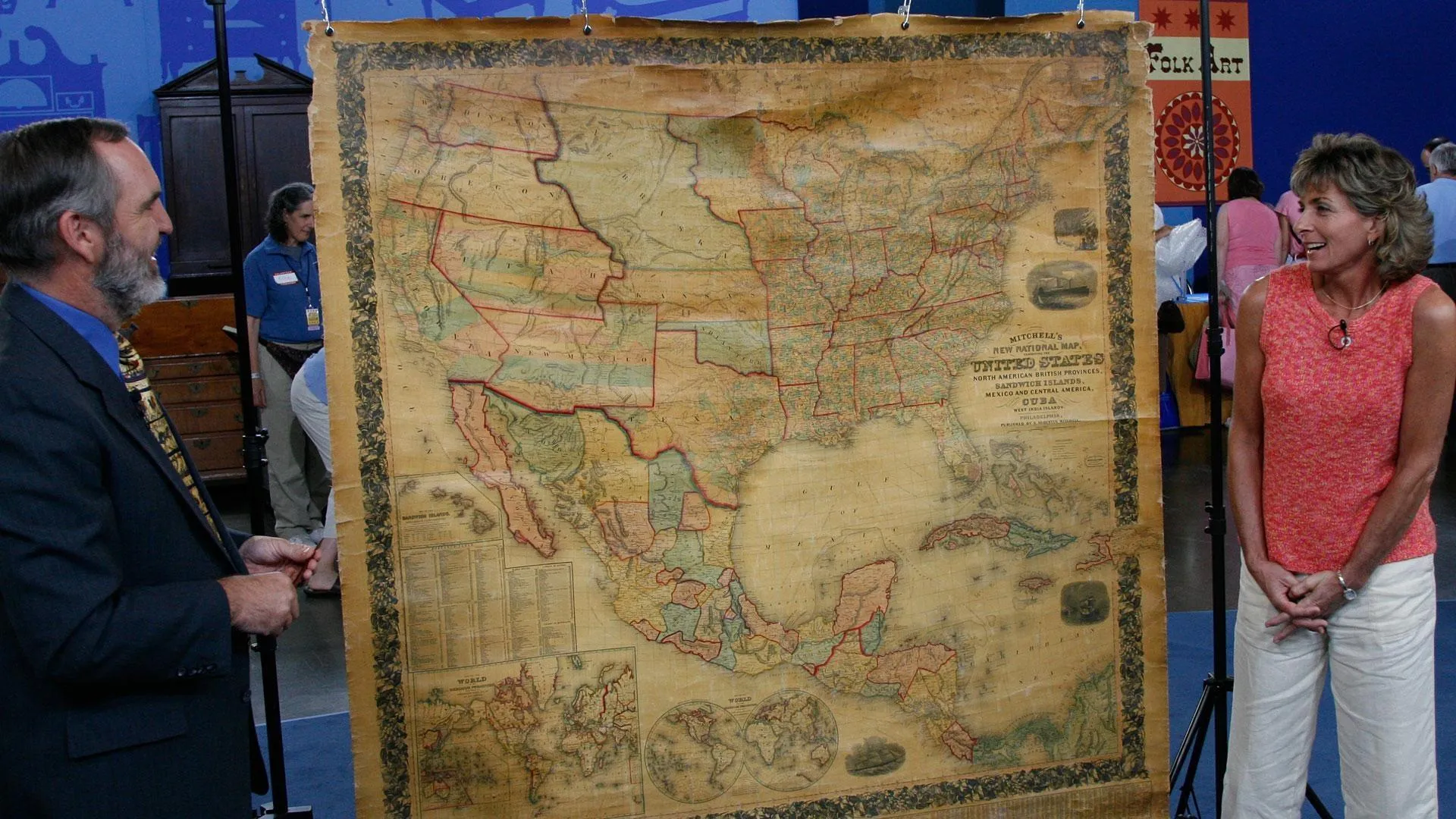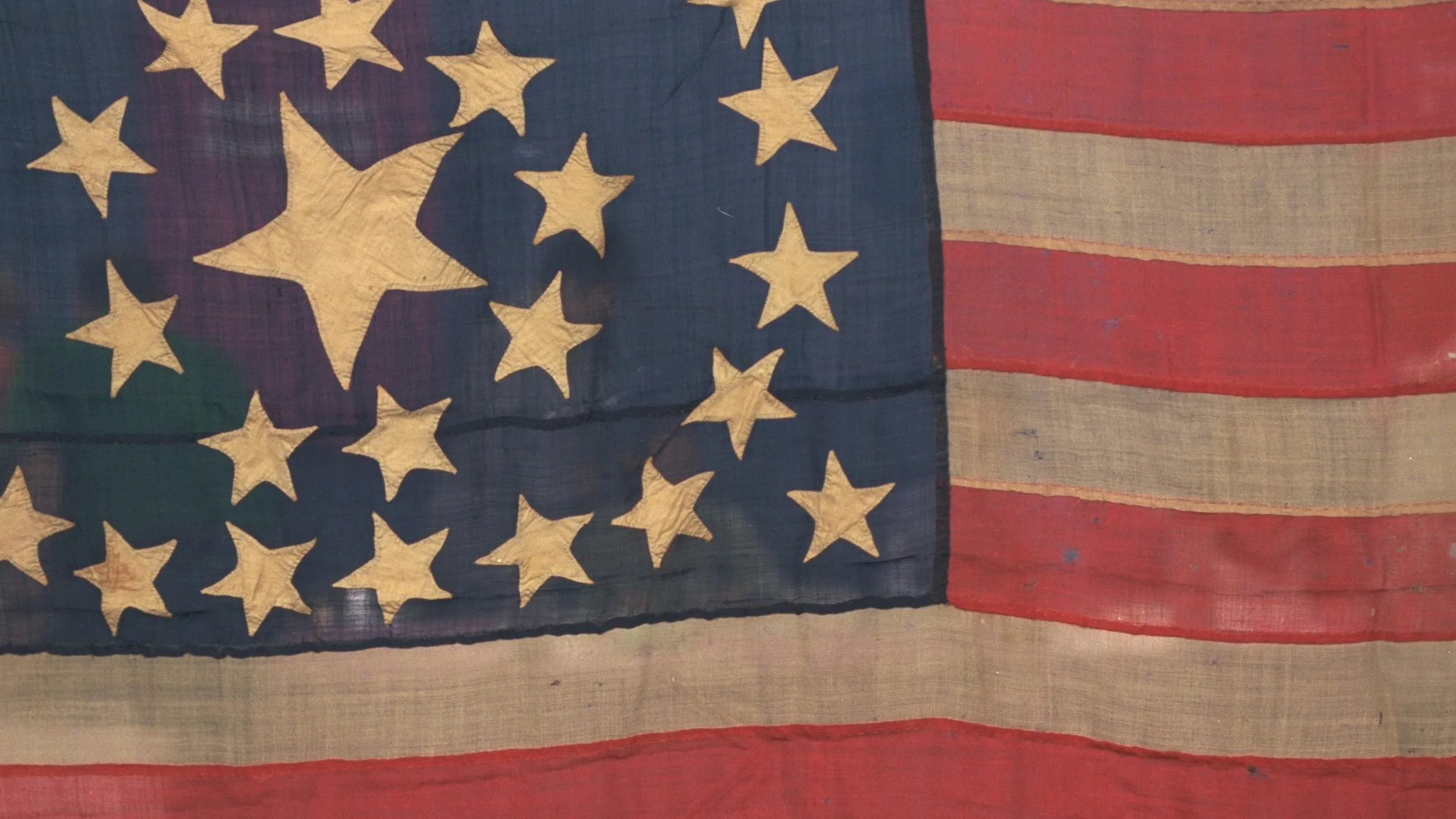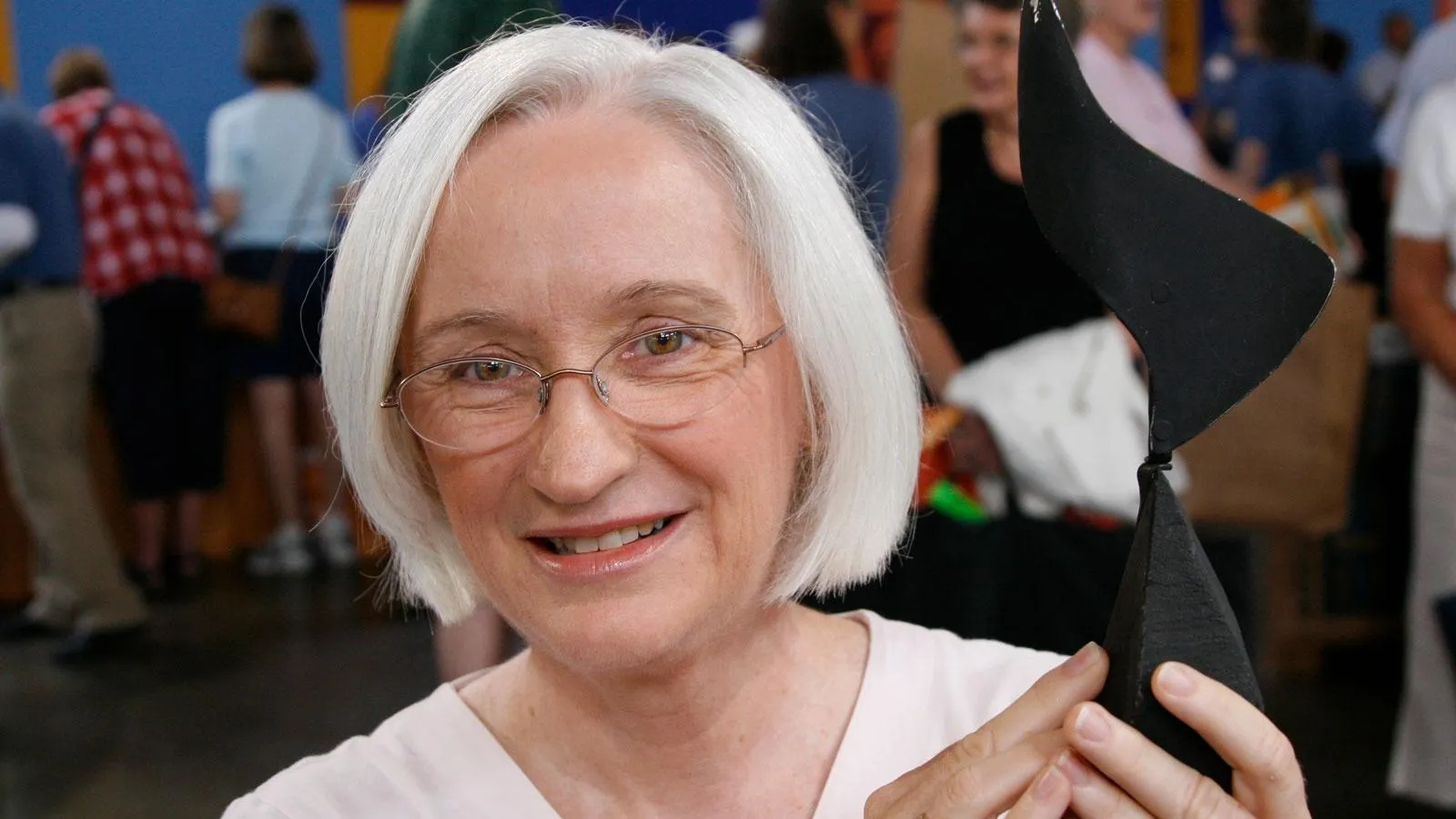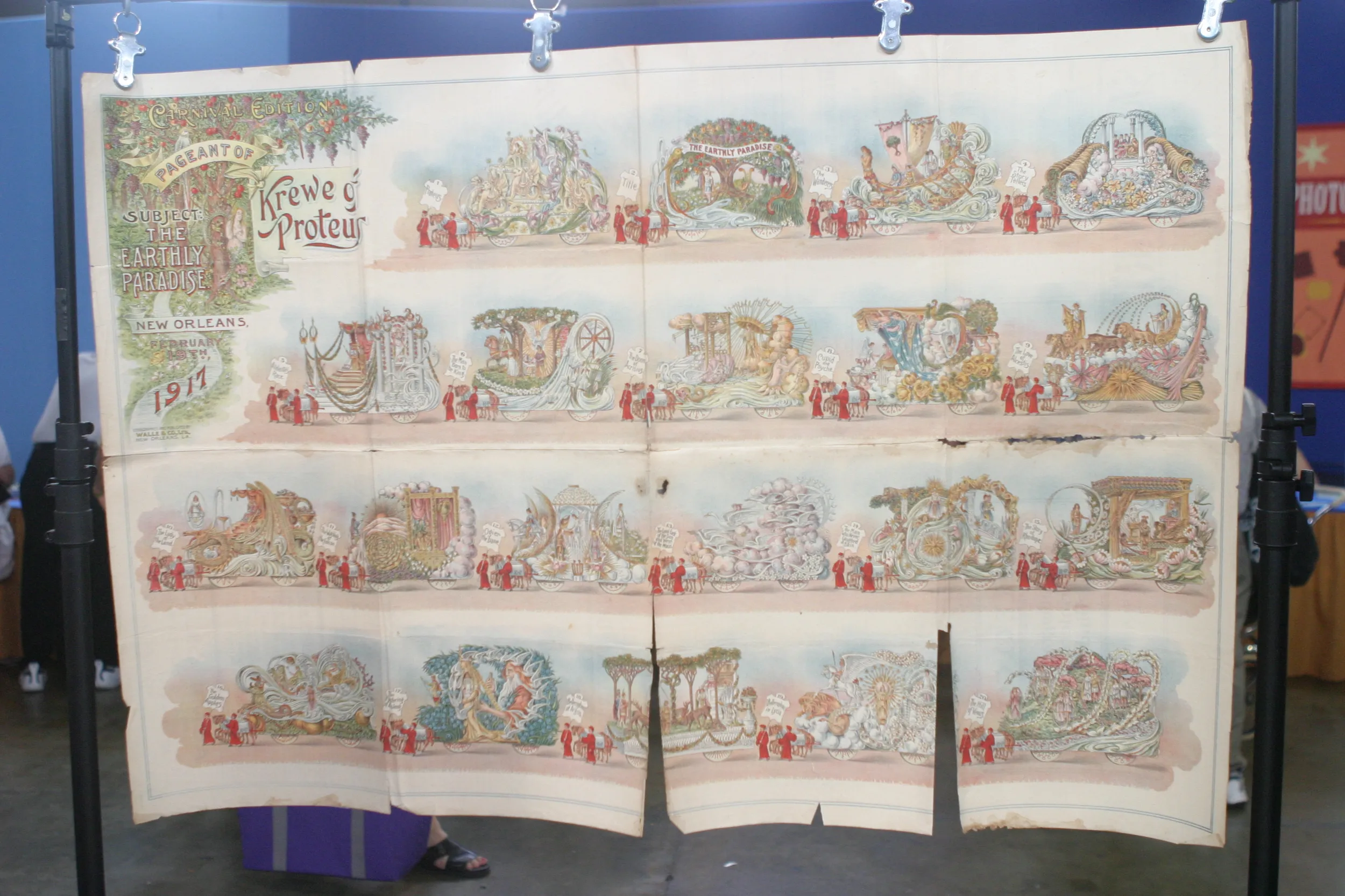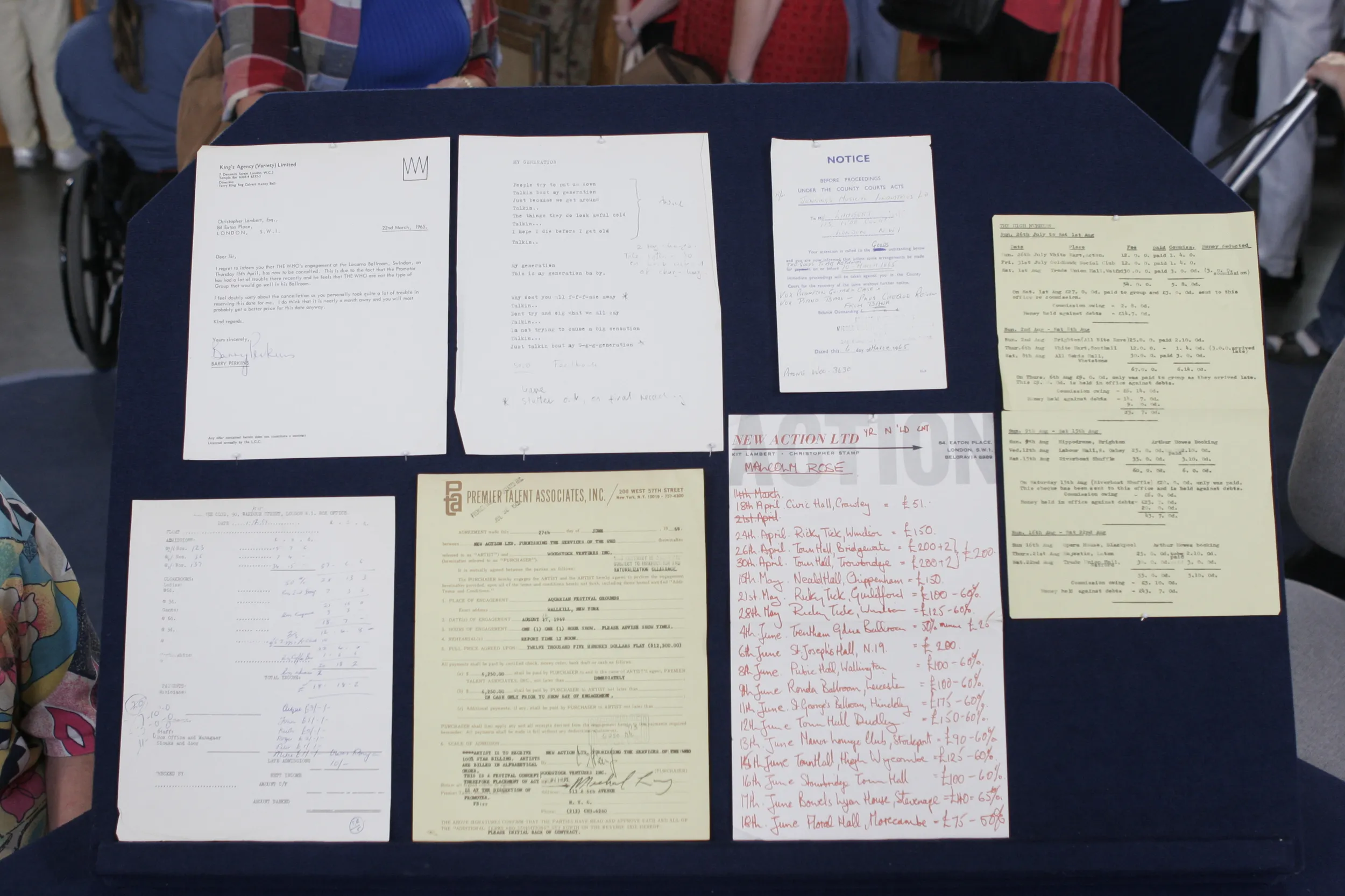GUEST: Well, I brought in my great-grandfather's arm. (laughs): It's a prosthesis. He had his arm shot off in the Civil War.
APPRAISER: Mm-hmm, and this is the gentleman?
GUEST: And this is my great-grandfather, Thomas Jefferson Crout. He was in the Third Pennsylvania Cavalry.
APPRAISER: Very famous regiment. If you notice, this photograph was taken on Market Street in Philadelphia, which is basically where we're at today. It's a nice full image of your ancestor in his uniform. The cavalry-style shell jacket is what pattern that's called. The gold piping on his coat denotes the cavalry branch of service. Nice, clear, full image. When they made that picture, it would have actually been black and white, and they hand-tinted it. And what do we have here?
GUEST: Well, this is a neckerchief holder that was carved out of a soup bone in Libby Prison. He was taken prisoner in 1862, and one of his fellow prisoners carved this in the prison.
APPRAISER: On this side, we have his name. On this side, we have "Libby, 1862." Libby Prison was a Confederate prison camp in Richmond, Virginia. Wonderful piece of folk art and prisoner-of-war art. Did he lose his arm before he went to prison?
GUEST: No, he was actually exchanged, and then went back to fight with his outfit, and he lost his arm in the Battle of Mine Run.
APPRAISER: It was very popular during the Civil War, in the early days, to exchange prisoners and go back into service. If we turn it over, we actually have a Civil War patent date. It's patented in 1863, and it says "Lincoln's patent."
GUEST: Yeah, I always wondered about that. (chuckles)
APPRAISER: Right, not Abe. A different Lincoln.
GUEST: A different Lincoln.
APPRAISER: But it's nice to have that little mark on there. Do you know how he came about getting this arm?
GUEST: No, I didn't, I just thought that service provided that. He was in two service hospitals.
APPRAISER: Well, this one's actually better than what he would have gotten on Army money. This is a real high quality. It's hand-carved wood. We have the enamel paint. And it's actually maneuverable. You have a hand that's removable. Also, if you push the button, the arm tilts down. And we have a leather covering over the joint. It has vent holes on each side to let the arm breathe. Would have had, like, a shoulder halter to go over the top. It's a great piece. Have you ever had these pieces appraised?
GUEST: No, nobody knew anything about it.
APPRAISER: Right.
GUEST: This was kept in the closet for 100 years, maybe...
APPRAISER: Right.
GUEST: ...in the same house. Everybody was afraid of it.
APPRAISER: Right. (both laughing)
GUEST: Used it for jokes for years.
APPRAISER: Really?
GUEST: Oh, yeah. (chuckling): On Halloween and so forth.
APPRAISER: If we work from top to bottom, we have the image that would be probably a $400 to $600 image. We have the carved neckerchief slide, which would be another $400 to $500. And the arm, to a Civil War or a medical collector, would probably be somewhere in the $1,000 to $1,500 range.
GUEST: Wow.
APPRAISER: So as a group, I'm sure with it being an ancestor, it wouldn't be something you get rid of.
GUEST: No.
APPRAISER: So, for insurance purposes, you'd need to insure it between $2,500 and $3,000 as a group.
GUEST: Wow, great, well, thank you very much.
APPRAISER: You're more than welcome. It's possible that he got a better-made one after the war. Because if he could afford this during the war, the financial situation was only gonna get better, which could explain why he wasn't buried with this arm.

